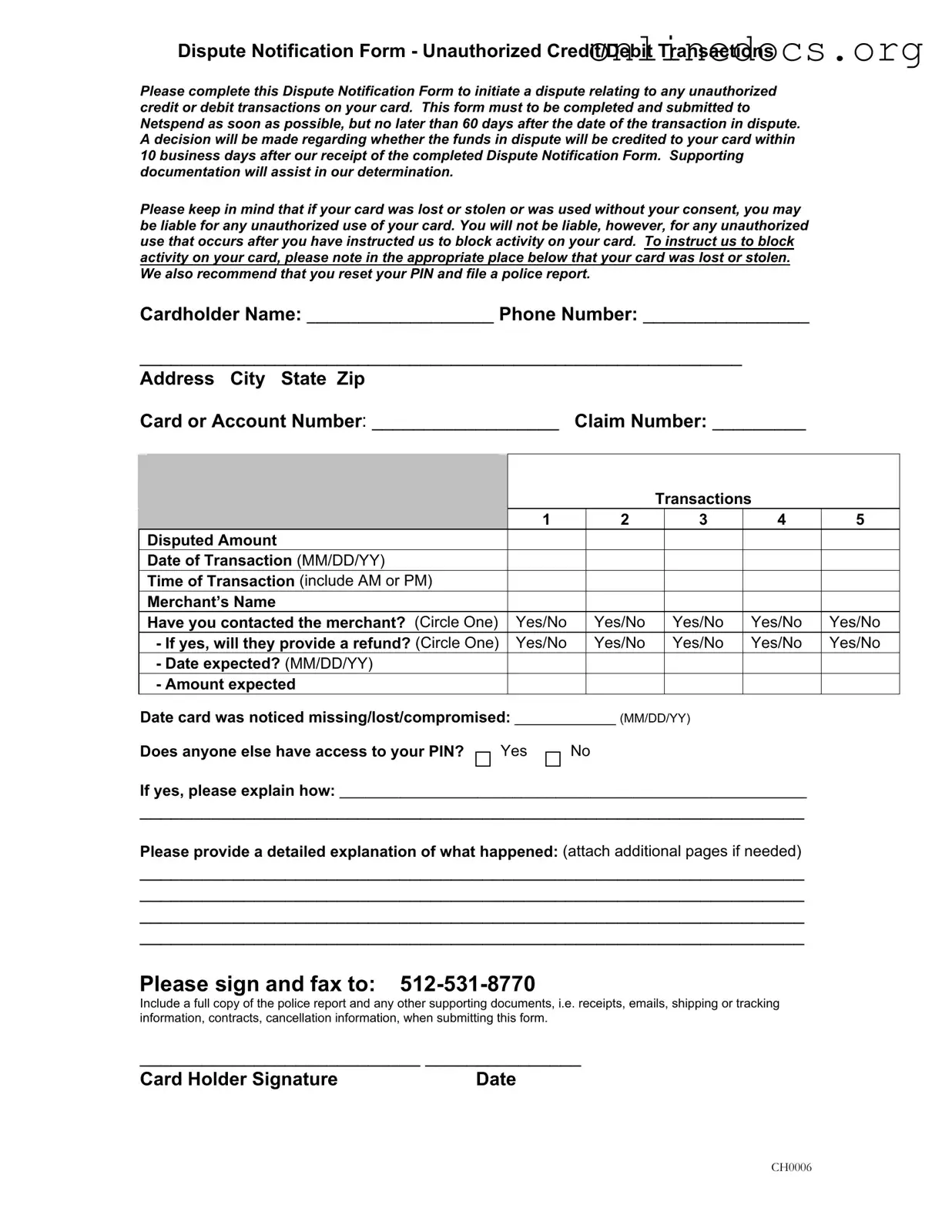The Netspend Dispute form shares similarities with the Chargeback Request Form used by credit card companies. Both documents serve to initiate a dispute regarding unauthorized transactions. They require the cardholder to provide specific details about the transaction in question, including the date, amount, and merchant information. Additionally, both forms emphasize the importance of submitting the request within a certain timeframe, usually within 60 days of the transaction. Supporting documentation is also encouraged to strengthen the claim, making it easier for the financial institution to process the dispute effectively.
Another comparable document is the Fraud Report Form, which is typically used to report instances of identity theft or fraudulent activity. Like the Netspend Dispute form, this report requires personal information from the victim, including contact details and account numbers. Both documents ask for a detailed explanation of the incident, allowing the respective institutions to understand the nature of the fraud. Furthermore, both forms often advise victims to take additional protective measures, such as notifying law enforcement or freezing their accounts.
Understanding the various dispute forms is essential for consumers facing transaction issues. For instance, the Rental Application form can provide an essential reference point for documentation requirements, as it's similarly focused on collecting specific information for the evaluation process. For those needing resources related to rental applications, the legalformspdf.com offers a range of templates that can reduce the ambiguities in the rental process.
The Identity Theft Affidavit is also similar to the Netspend Dispute form. This affidavit is used when an individual believes their personal information has been compromised. It requires the victim to provide comprehensive details about the unauthorized transactions, similar to the information requested in the Netspend form. Both documents aim to establish a clear account of events and facilitate the investigation process. Additionally, both may require the submission of supporting documents to substantiate the claims made by the victim.
Lastly, the Unauthorized Transaction Claim Form used by banks is akin to the Netspend Dispute form. This form is specifically designed for customers to report transactions they did not authorize. It requests similar information, such as the transaction date, amount, and merchant details. Both forms have strict deadlines for submission and highlight the importance of providing supporting evidence to substantiate the claim. They both aim to protect consumers from financial loss due to unauthorized transactions and to expedite the resolution process.
